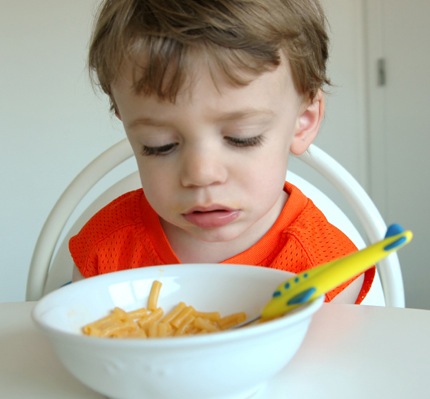
A new study conducted by the CDC, or Centers for Disease Control and Prevention, finds that the majority of packaged meals designed for toddlers exceed the recommended toddler salt intake. Over 1,100 meals were examined in the study. Of these, almost 75% had excessive levels of salt. At worst, the meals had up to 630 mg of sodium.
The American Heart Association recommends that children receive no more than 1,500 mg of sodium over the course of an entire day. Excessive sodium intake in children can lead to high blood pressure, just as it does in adults. If a child is already overweight, the risk for developing hypertension will skyrocket with the over-consumption of salt. Limiting the number of processed and packaged foods given to toddlers might be the first step towards preventing high blood pressure in young children.
Toddler Foods Too Salty, Baby Foods OK
In conducting their study, researchers looked at the nutrition labels on packaged meals for toddlers, defined as children aged 1 to 3, and babies under the age of 1. Baby meals included traditional baby food, while toddler meals included things like chicken spaghetti, pizza and macaroni.
Any meal found in excess of 210 mg of sodium per serving was classified as exceeding toddler salt intake. This is because 210 milligrams is roughly 1/7th of the sodium a toddler should be receiving per day, and toddlers are expected to consume about 7 daily servings of dairy, protein and grains, which contain the majority of sodium found in any diet. Veggies and fruits, by comparison, have very little sodium.
Meanwhile, virtually all of the baby meals tested contained acceptable levels of sodium. Over 600 meals were tested, and only one exceeded the 210 mg sodium limit.
Salt Intake by Age
While the American Heart Association only recommends that children and adults get 1,500 mg of sodium per day, the CDC is more lenient; they consider 2,300 mg to be the daily limit for salt intake. However, the vast majority of people exceed both of these limits. According to recent studies, children between the ages of 2 and 5 consume about 2,307 mg of sodium per day. For kids in the 8 to 12 age range, a dramatic increase to 3,260 mg is observed. An average daily sodium intake of 3,486 mg was found in teens ranging from 13 to 18.
Recommendations for Lowering Toddler Salt Intake
As mentioned earlier, fruits and vegetables are very low in sodium. Therefore, the CDC recommends that children make fruits and veggies a bigger part of their diet in order to limit their sodium intake. This dietary modification would also result in a lower intake of fat and sugar for many children, potentially lowering the prevalence of childhood obesity at the same time.
The CDC also recommends that parents carefully read nutrition labels on the packaged foods they serve their children, and choose lower-sodium ingredients (such as low-sodium chicken broth) when cooking meals.
It’s also important to note that children are not predisposed to enjoying salt when they’re born, according to Joyce Maalouf, one of the lead researchers behind the study. Rather, the taste for higher-sodium foods is acquired. If sodium intake is limited in children early in life, they’ll be less likely to over-consume sodium later in life.
The Bottom Line
Many prepackaged meals aimed at toddlers have far too much sodium, according to a new study by the CDC. The results of the study were presented yesterday in New Orleans at a meeting of the American Heart Association.













